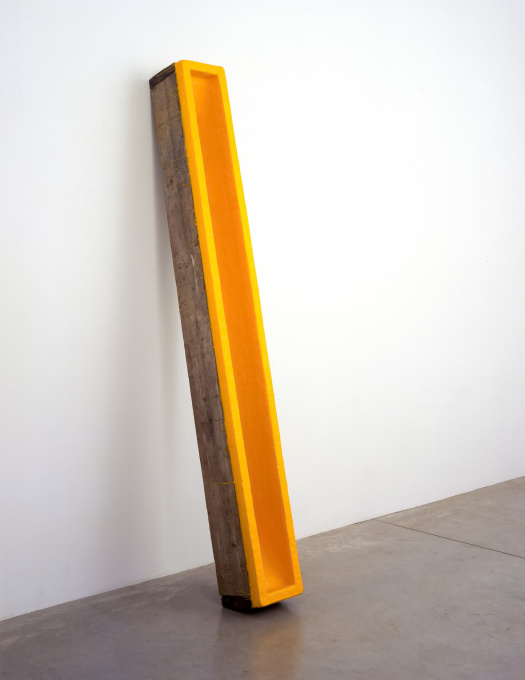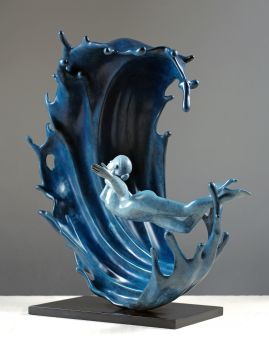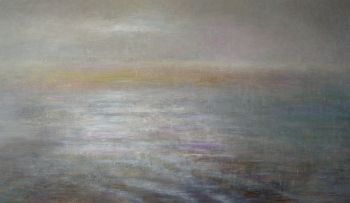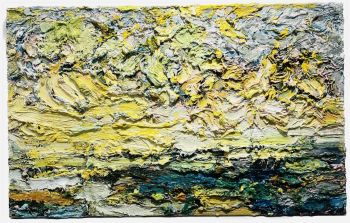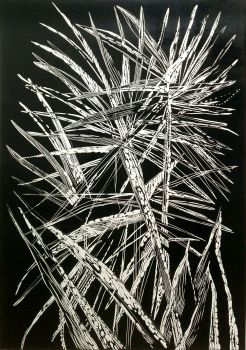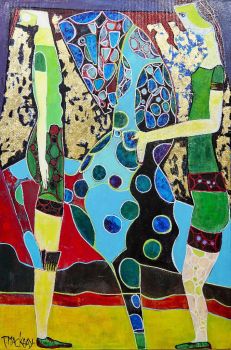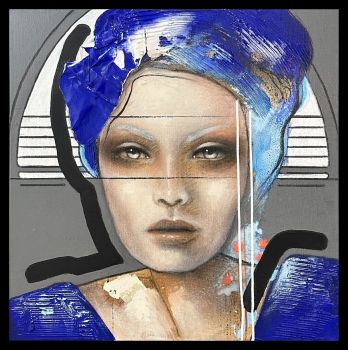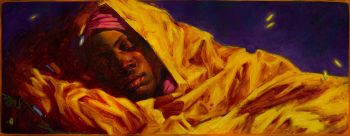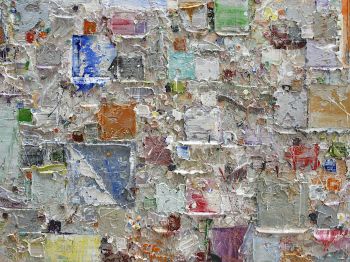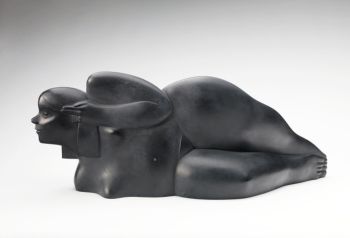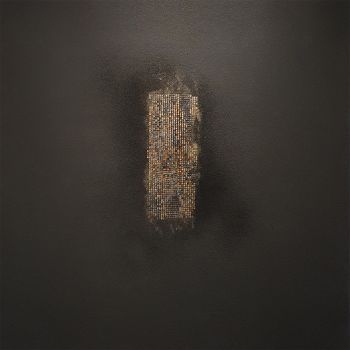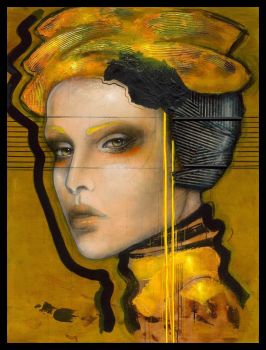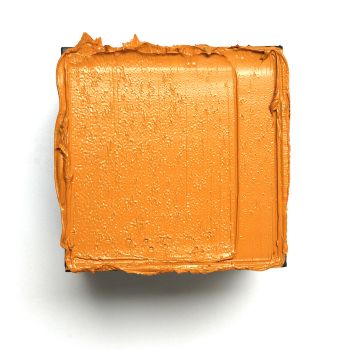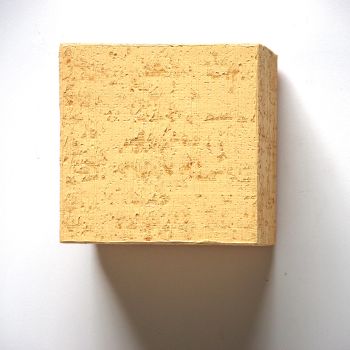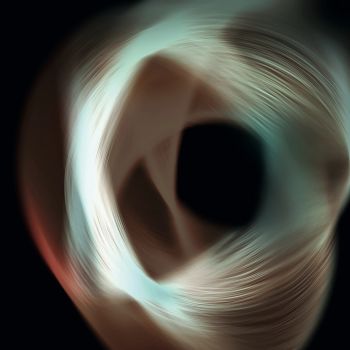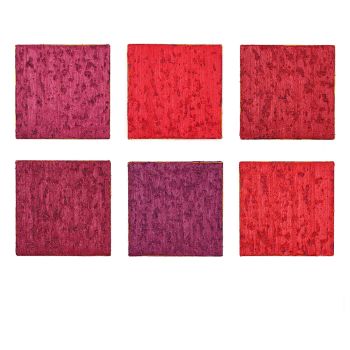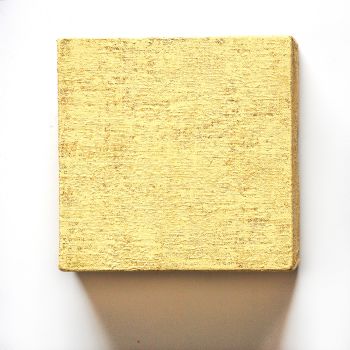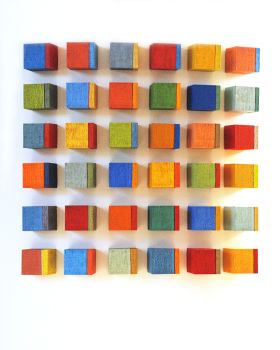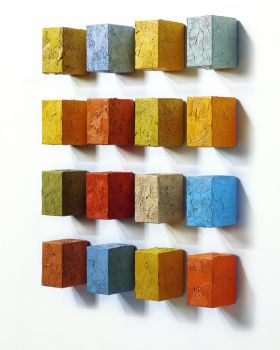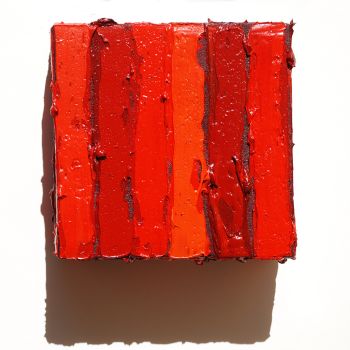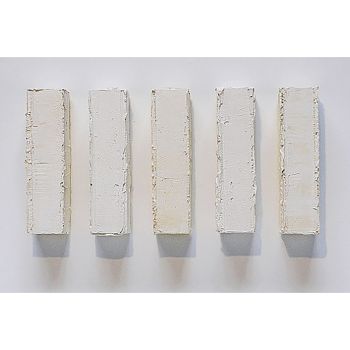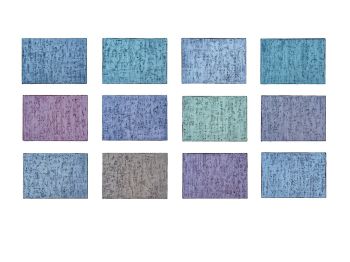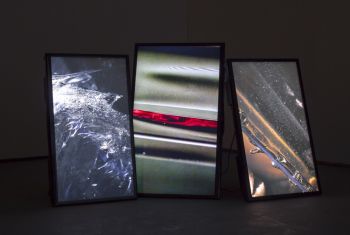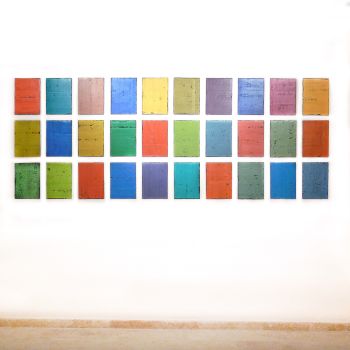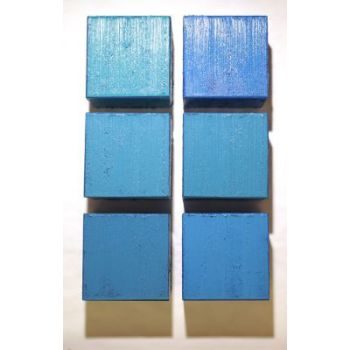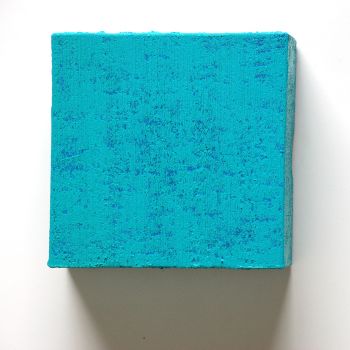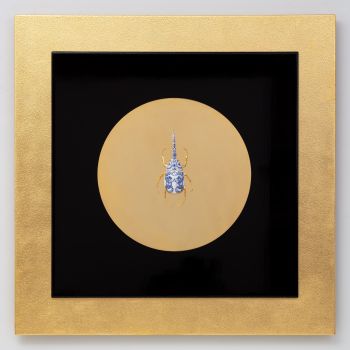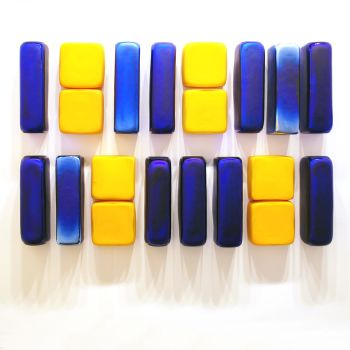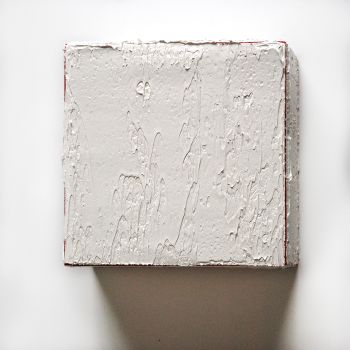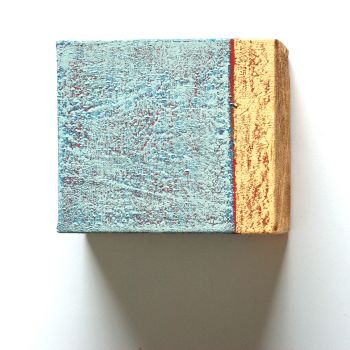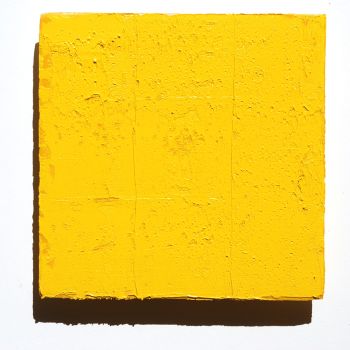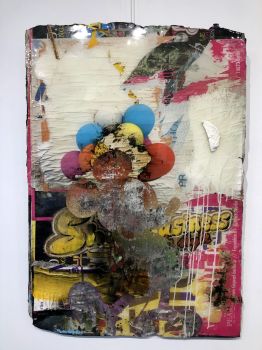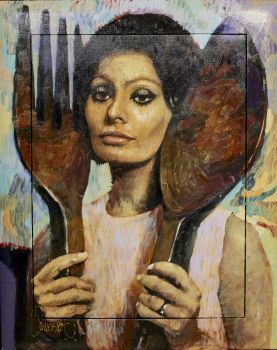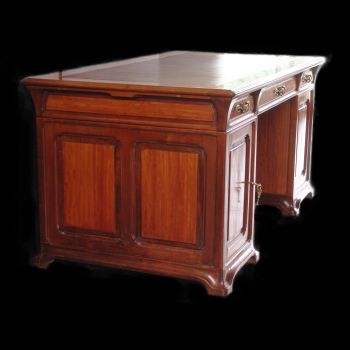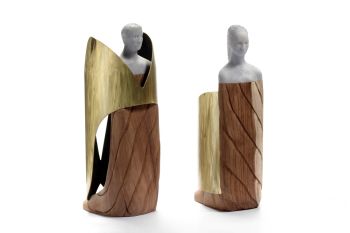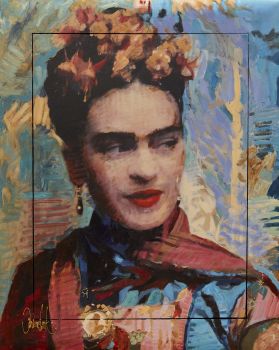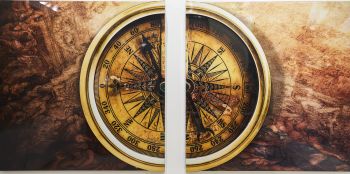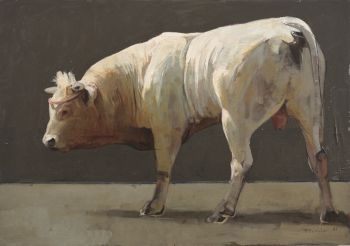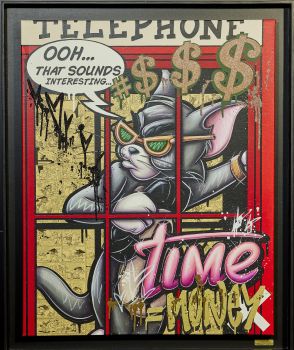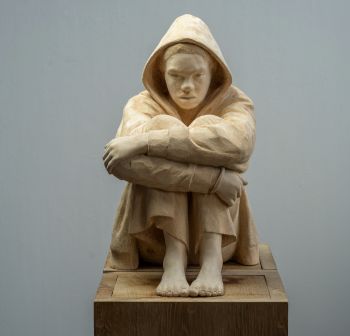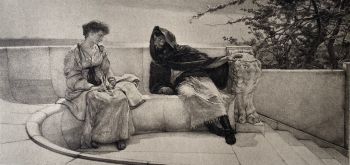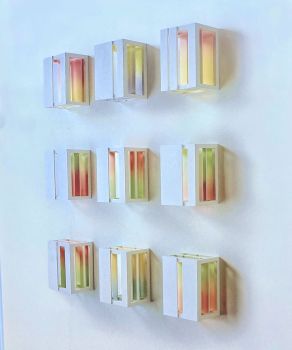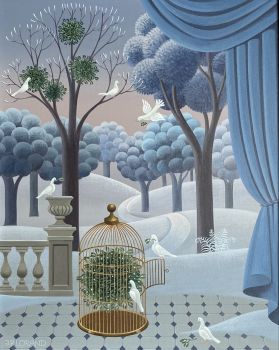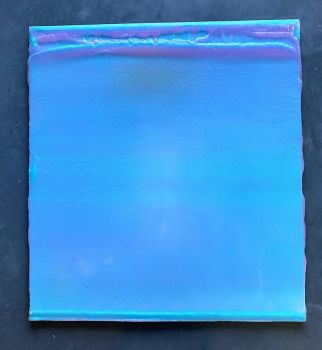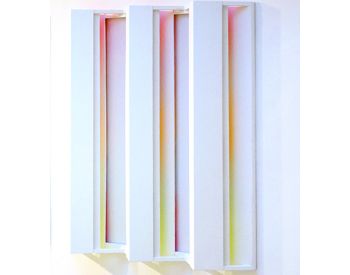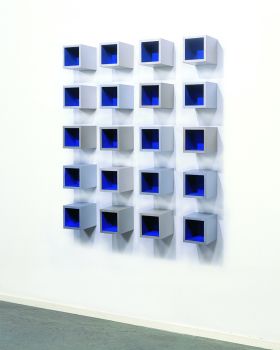Troug- Cadmium Yellow Deep 2003
JOHANNES GIRARDONI
HolzWachsBienen Wachs
254 ⨯ 28 ⨯ 55 cm
ConditionNeeds restoration
€ 5.000
Gallerease Selected
- Über KunstwerkExhibited in Museum Ludwig 2005
Part of Series 2003–2011, Beeswax, pigment, wood
Light Reactive Organic Sculptures comprise an extensive body of work that has evolved over the past two decades. The work focuses on reductive investigations at the intersection of sculpture and painting, and explores the continuously shifting relationship between light and material. Despite an elemental material vocabulary — found wood, beeswax, and pigment — the work’s physical constellation becomes both the carrier of an explicitly painterly event, while also being the foundation of an immaterial phenomenon. The pieces are often examinations of phenomenological processes, where a hollow or empty space — a tangible emptiness — turns out to be the actual center of the work. Opposites and contradictions, as well as the complex dialectic between them, are the fundamental themes. The orchestration of material and light, presence and absence, things found and things formed, all resist clear fixation, thereby maintaining and creating works with their own non-derivable reality.
The primary material organization is found wood that forms the base for color built with pigment and beeswax. The wood is harvested from urban debris at building constructions and deconstructions, and in its worn and deteriorated condition, creates an instant history. These structures become the foundation for an architecture of color in which the material is color, and the color is material. Built by suspending varying degrees of pigment in layer over thin layer of beeswax, light travels into the wax and encircles the pigment. This results in light reactivity, and juxtaposed to the static, aged structure of the wood, the sculptures’ pigmented wax evolves and adapts to changing ambient light situations. These sculptures hold light.
"Girardoni’s use of wax, influenced by Jasper John’s paintings with encaustic — such as Flag and Target — and related to Brice Marden’s use of the material in his opaque, monochrome pictures from the 1960s, ultimately led the artist to sculptural procedures: “Wax catalyzed the move away from ‘painting’ … The beeswax allowed me to ‘build’ color.” Girardoni prefers using wooden slats, boards, or parts of wooden beams as construction material, where traces of their use have been recorded. To this the artist applies the material color — pigmented wax. Through their ready-made character the artist instills a uniqueness and reference to life in the objects. At first glance, the works, which are oriented towards geometric forms and series, seem like minimalist art in the succession of Carl Andre, Sol LeWit and Donald Judd. The major difference in Girardoni’s works, however, is that they have an organic and human atmosphere, while the cubes, fences and plates, due to their industrial production, emanate coolness. (…) Even though Girardoni leaves both the inner and outer panels abstract, he is nevertheless concerned with a contemplative experience, and not solely with a matter-of- fact inventory of color, material, and structure. Joseph Beuys had attributed beeswax a symbolic-spiritual function, that of warmth and energy. These may also be experienced in Girardoni’s objects, paired with painterly, coloristic, and tactile qualities".
– Florian Steininger - Über Künstler
Johannes Girardoni, ein 1967 geborener österreichisch-amerikanischer Künstler, ist bekannt für seine fesselnde Verschmelzung digitaler und analoger Medien und hat im Bereich der Skulptur und Installationskunst unauslöschliche Spuren hinterlassen. Von komplizierten, zierlichen Kreationen bis hin zu weitläufigen, interaktiven Lichtwundern umfasst Girardonis künstlerisches Repertoire ein atemberaubendes Spektrum.
Aufgewachsen in einem malerischen Dorf in der Nähe von Wien, überschritt Girardonis kreative Reise Kontinente, als er 1982 im zarten Alter von vierzehn Jahren mit seiner Familie nach Kalifornien übersiedelte. Seine prägenden Jahre am Bowdoin College in Maine von 1985 bis 1989, wo er ein Doppelstudium in Geschichte und Kunst absolvierte, legten den Grundstein für seine künstlerische Odyssee. Während seiner Amtszeit bei Bowdoin verfeinerte Girardoni sein Handwerk als Gastkünstler am renommierten MIT Media Lab.
Girardonis künstlerische Entwicklung vom zweidimensionalen zum dreidimensionalen Ausdruck spiegelt seine Vorliebe für Experimente wider. Beeinflusst von den Heißwachsmaltechniken von Größen wie Brice Marden und Jasper Johns verkörpert sein Werk ein fesselndes Zusammenspiel formaler Kontraste.
Die Welt wurde auf Girardonis Einfallsreichtum aufmerksam, als er 1991 seine erste Ausstellung in New York präsentierte, die durch den scharfsinnigen Blick des Kunstkurators Friedhelm Mennekes vorangetrieben wurde. Im Laufe der Jahre weitete sich Girardonis künstlerischer Fußabdruck weltweit aus, mit bemerkenswerten Ausstellungen wie der Ausstellung „Personal Structures“ im Ludwig Museum, Deutschland, im Jahr 2005 und der Teilnahme an der Ausstellung „Origins“, die vom Hudson Valley Center for Contemporary Art in Peekskill, New York, gesponsert wurde.
Einer von Girardonis wegweisenden Beiträgen ist das Konzept der „Refrequenced Sculpture“, das 2009 in seiner Installation „7 Minutes 20 Seconds“ in der Ausstellung „Creative Migration“ des Österreichischen Kulturforums in New York zum Ausdruck kommt. Sein Hauptwerk „The (Dis)appearance of Everything“, das 2011 auf der 54. Biennale von Venedig vorgestellt wurde, verbindet Licht und Ton nahtlos zu einem immersiven, interaktiven Erlebnis.
Im Jahr 2013 präsentierte Girardoni bei Nye & Brown in Los Angeles, Kalifornien, eine faszinierende Präsentation mit dem Titel „Off and On“, in der avantgardistische Installationen gezeigt wurden, die Licht und Ton mithilfe modernster Technologie umwandeln. Insbesondere seine Übersichtsausstellung 2018 im Levy Gorvy London mit dem Titel „Sensing Singularity“ zeigte die bahnbrechende Installation „Metaspace V3“, ein Beweis für Girardonis Pioniergeist bei der Integration softwaregesteuerter Elemente in die menschliche Interaktion.
Zu seinen bemerkenswerten Werken zählen „The Infinite Room“, eine monumentale Skulptur im US-Bundesstaat Washington, und „Spectral Bridge“, ein architektonisches Wunderwerk, das das Spectral Bridge House in Venice, Kalifornien, ziert, als Zeugnisse von Girardonis künstlerischem Können. Ein 2007 veröffentlichter Wälzer mit dem Titel „Johannes Girardoni“ bietet einen umfassenden Einblick in seine künstlerische Reise, während seine Aufnahme in die angesehenen Sammlungen von Institutionen wie dem Fogg Museum an der Harvard University und dem Museum Ludwig in Köln, Deutschland, sein bleibendes Erbe unterstreicht .
Girardonis herausragende Beiträge haben Anerkennung gefunden und ihren Höhepunkt in Auszeichnungen wie dem prestigeträchtigen Francis J. Greenburger Award im Jahr 2019 gefunden. Kritiker und Kenner haben Girardonis Arbeit gleichermaßen für ihre eindrucksvolle Resonanz und innovative Verschmelzung von Medien gelobt. Von den üppigen Landschaften Ungarns bis zu den belebten Straßen New Yorks überschreitet Girardonis Kunst Grenzen und lädt den Betrachter zu einer transzendenten Reise der Erkundung und Selbstbeobachtung ein.
Sind Sie daran interessiert, dieses Kunstwerk zu kaufen?
Artwork details
Related artworks
Jack Marijnissen
The Fountains around the Centre Pompidou2013 - 2016
Preis auf AnfrageFotogalerie Utrecht
1 - 4 / 24Rene Rietmeyer
“NETHERLANDS BRABANT NOVEMBER 2000”2000
Preis auf AnfrageEuropean Cultural Centre Collection
Rene Rietmeyer
''Installation Miami-Beach 2006''2006
Preis auf AnfrageEuropean Cultural Centre Collection
Samuel Dejong
Anatomia Blue Heritage, Atlas Closed2017 - 2019
Preis auf AnfrageVilla del Arte Galleries
Rene Rietmeyer
"Venezia and Murano September 2007"2007
Preis auf AnfrageEuropean Cultural Centre Collection
1 - 4 / 24Rene Rietmeyer
''Installation Miami-Beach 2006''2006
Preis auf AnfrageEuropean Cultural Centre Collection
 Kuratiert von
Kuratiert vonDanny Bree
1 - 4 / 24- 1 - 4 / 12

